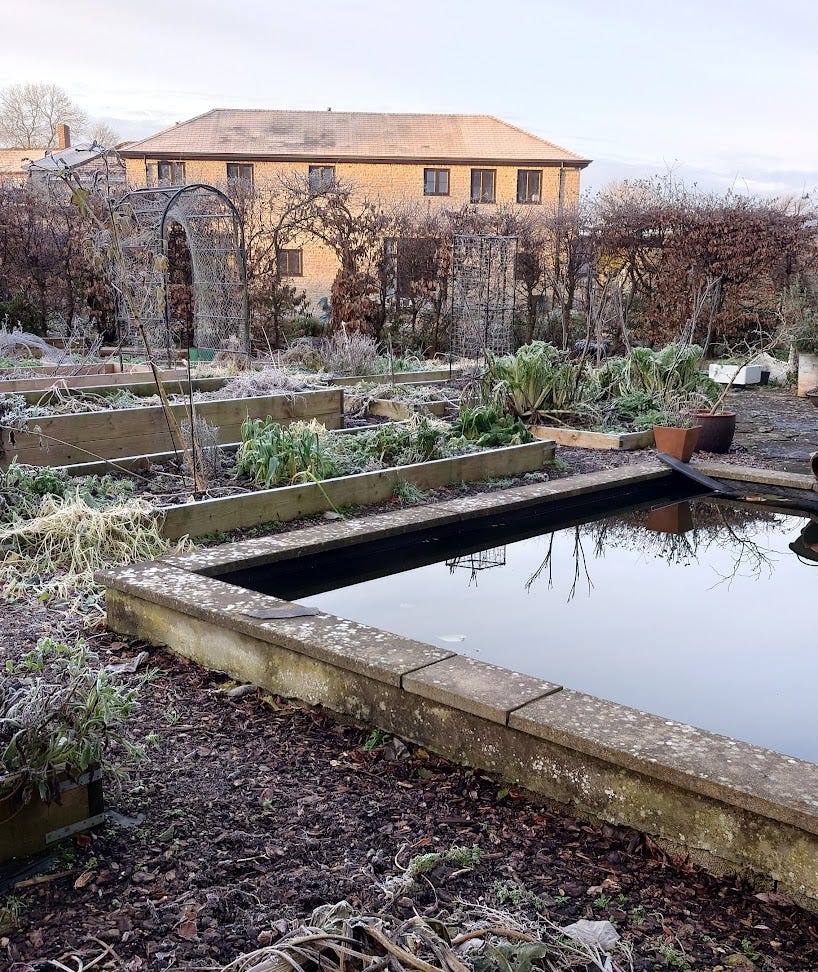Soil and the role of dipping ponds in the garden
World Soil day, how dipping ponds can harvest water, prevent flooding and influence the microclimate, and one way that plants communicate with fungi
Wandering around my frosty garden with my camera, I noticed the water in my dipping pond was not frozen which reminded me of another benefit of this feature in my garden, but more of that later.
First, I have to mark World Soil Day which takes place tomorrow
This week, there will undoubtedly be many posts highlighting one of our most vital and undervalued resources - soil. Did you know that more than half of all species on Earth live in soil? It’s the planet’s most biodiverse habitat, yet we’ve identified only about 1% of the incredible organisms found within it. There’s still so much to discover and understand.
Soil’s role in climate change is crucial:
It stores more carbon than the atmosphere and all the world’s forests combined, a massive10 billion tonnes of carbon in the UK alone.
Healthy soils are natural water regulators. One hectare can hold the equivalent of 1.5 Olympic swimming pools of water, helping to prevent floods and mitigate droughts. In fact, UK soils store more water than…





